Growing mushrooms at home, advantages and difficulties
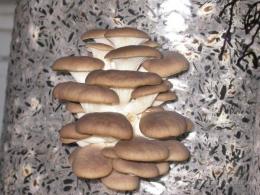
Mushrooms - the product is unique, healthy and tasty. But rarely does anyone have the opportunity to walk through the forest and collect a basket of fresh, beautiful specimens. But on the market, sellers cannot always boast of the good quality of the product they sell, and it is not known how and where it was collected.
In connection with this cultivation mushrooms at home is a very popular hobby. In Russia, they began to be cultivated already at the end of the 19th century, and in the world much earlier - the first mentions of cultivation in artificial conditions are found as much as 2000 years ago.
Content:
- Methods for growing mushrooms at home
- How to grow mushrooms at home
- Growing stages
- We form the mycelium and substrate into bags, packages
- How to start a breeding business at home
Methods for growing mushrooms at home
Mushrooms appear and grow on mycelium - germinated spores. This ready-made planting material will be placed in the substrate, where, growing, the mycelium turns into thin long threads - the rudiments of future bodies.
There are several growing technologies:
- Intensive
- Extensive
Intensive technology is highly efficient, producing crops all year round, regardless of the season, but this technology is more expensive and requires additional costs.
To obtain the product on an ongoing basis, select a suitable room with favorable climatic parameters: humidity, light, heat, ventilation.
Substrate It is individual for each type, but most often they use straw from cereal crops (oats, rye, barley), it is crushed and treated with hot steam or boiled. And then the finished substrate and mycelium are laid out in layers one by one in prepared, disinfected boxes or bags.
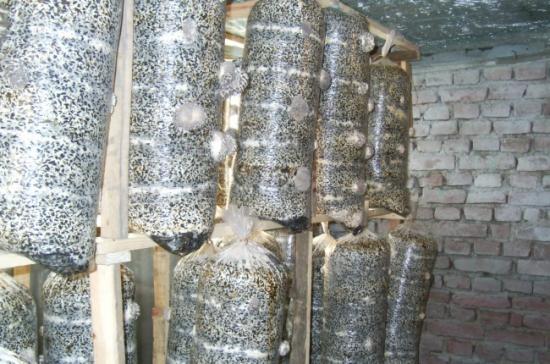
If bags are used, then slots are made in them for exit. With this method, the development time is reduced and occurs in 9-10 weeks; in just a year, the harvest can be harvested 4 times, suitable for growing mushrooms at home.
The extensive method is to obtain the product in natural conditions, not indoors, but in open space: on stumps, fallen trees, boxes, bags, bales of hay or straw. To do this, the necessary “containers” for growing are drilled, holes are made and the finished mycelium is placed there.
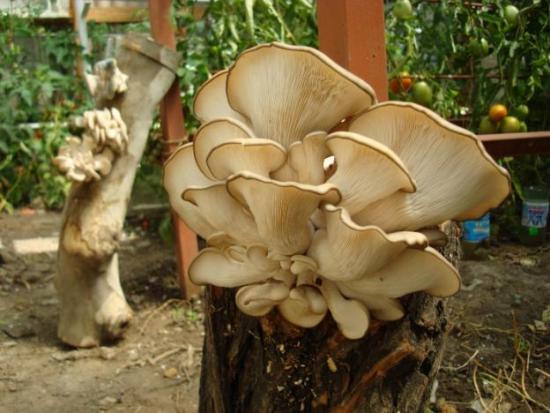
For rapid growth of the finished product, you need to maintain moisture by adding or burying the substrate with mycelium in the ground. The big advantage of this method is its low financial investment, since there is no need to look for premises or spend money on maintaining climatic conditions.
And the disadvantages, of course, are that the harvest depends on weather conditions; as a rule, it ripens in the fall at the end of September or October.
How to grow mushrooms at home
Before you start growing in your apartment, house or cottage, you need to read and study a lot of information. The most difficult points in growing mushrooms - this is maintaining the humidity level: 92-95%, and this is very difficult to achieve at home on a windowsill or even on a balcony, and living in such conditions will be unbearable.

Besides, mushrooms when ripe, they emit spores into the air, which are a strong allergen for humans, and if you are constantly in such a room without a mask, it can lead to respiratory diseases, although the spores emit large specimens, “old” in our terms, they do not reach this state They have time to grow and are cut off, but there are still risk factors.
It is convenient to grow mushrooms for those who have private houses with basements, cellars or sheds, where the conditions are the most favorable and suitable.
Stages of growing mushrooms at home
Breeding at home is not a complicated process, even for beginners, consisting of several stages:
- purchasing mycelium
- substrate preparation
- formation of mushroom bags, packages, blocks
- maturation process
- fruiting itself
Let's consider breeding using the example of oyster mushrooms: for the first experiment you should not buy a lot of mycelium, 1-1.5 kg is enough, this is enough for 4-5 kg of ready-made mushrooms. This amount is quite enough to get acquainted with the technology.
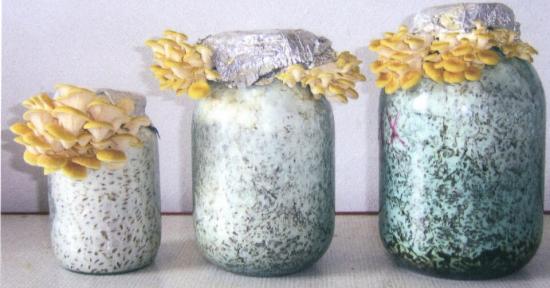
The optimal substrate is crushed green parts of corn, wheat and barley straw. We inspect the material, the presence of rot and mold on it is unacceptable, we chop it into pieces about 5 cm long.
Then we carry out heat treatment of the substrate. The procedure is required to give the substrate the required level of humidity and destroy all unwanted and pathogenic microorganisms. For this purpose, you need to boil the raw materials with water in a large bowl; it will take a couple of hours; harder materials require a longer cooking period.
Then drain the liquid and cool to room temperature. Check the humidity: when squeezed in your hand, a few drops of water should come out, no more.
We form the mycelium and substrate into bags, packages
The bags themselves need to be disinfected by first placing them in a 2% bleach solution for a couple of hours. Ready-to-use bags and bags are filled with material according to the following scheme: layer of substrate 5 cm – layer of mycelium 0.5-1 cm, and so on until the bag is completely filled, we bury the layer of substrate on top and tie it. We make small cuts of a few centimeters on all sides, every 15-20 cm.
The ripening period usually lasts 10-15 days.
At this time, you need to provide the bags with comfortable conditions:
- Ventilate the room
- Maintain humidity and room temperature
- Make sure that flies do not enter the room
- Do not allow the blocks to overheat; under the influence of high temperatures, fungal spores die
- You can install a fan for this purpose
- Lighting not necessary at this stage
After 15 days, long whitish threads will completely fill the finished blocks and a pronounced aroma will appear.
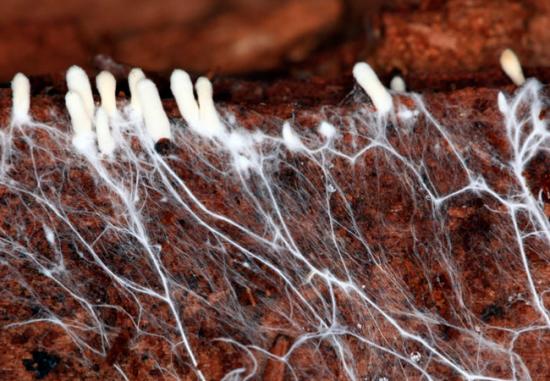
The most awaited stage in breeding at home champignons, oyster mushrooms, honey mushrooms and any other varieties - the stage of appearance of a full-fledged harvest. If you have waited until this stage, you are on the right track. This stage is not as simple as it might first seem.
Required:
- Reduce temperature by 10 degrees
- Increase humidity to maximum, up to 95%
- Provide illumination for 10 hours a day
- provide 3-5 times of ventilation of the room
Such high humidity can be obtained by spraying the floors and walls of the room with water, but the substrate itself should not be moistened. Over the next two weeks, the mushroom bodies themselves appear; the end of this period is the most favorable for harvesting.
Collect oyster mushrooms not cutting with a knife, but twisting, they do it slowly. After harvesting the first harvest, you can wait for the second one in 12-14 days. We must not forget about maintaining optimal conditions. There are up to 4 fees in total.
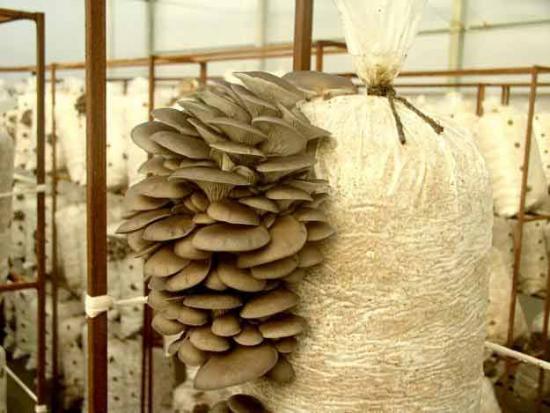
For those who find the option of preparing the substrate and forming bags to be labor-intensive and complicated, you can purchase ready-made blocks from mushroom farms and simply place them in a room with the desired climate, and you can enjoy collecting your own grown mushrooms.
How to organize a mushroom growing business at home
You can also think about creating a business for growing mushrooms at home.
Pros:
- No large investment required
- Champignon and oyster mushrooms - highly productive crops
- No special skills or abilities required
- Does not affect seasonality with the intensive method
- Doesn't require a lot of staff
- No need for large rooms
In addition, having registered a business, you can count on a subsidy from the state, but this requires a business plan, registration of the enterprise and a package of documents for approval by the Ministry of Agriculture.
Minuses:
- The need to maintain a microclimate
- Probability diseases, mold appearance
- Complex consumer search
- Labor-intensive paperwork
To make a profit, it is necessary to sell the grown goods. And this is where the biggest difficulties arise. It is difficult to arrange the supply of products and conclude contracts with customers.
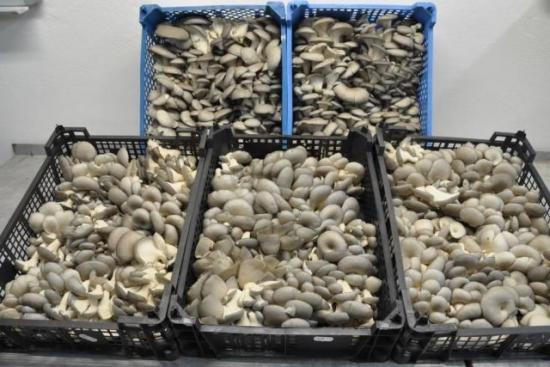
Individuals involved in cultivation will be helped to cope with implementation problems:
- rental of retail space at the market
- advertising via the Internet and social networks
- retail stores, but before delivery to stores, the product must be provided with the necessary documents and certificates
- wholesale
- restaurants, cafes
- close and acquaintances are an excellent implementation option, and word of mouth works no worse than the Internet
Costs are associated with the purchase of mycelium, substrate, bags and containers, registration of entrepreneurship, provision of a microclimate, disinfection and taxes.
Even with limited resources and a small premises, you can organize a profitable business if you strictly follow the instructions and the source of sales of products, so growing mushrooms at home as a business gives high results and profits.
We look at the video about the features of growing mushrooms at home:

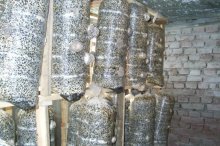

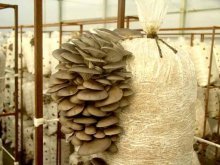
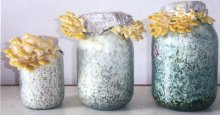
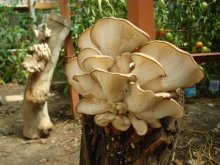
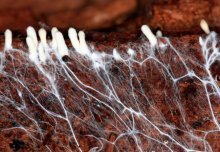
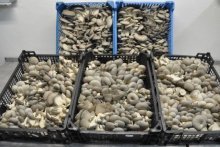
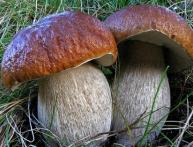
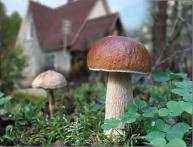
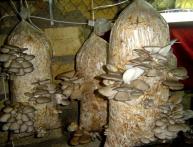
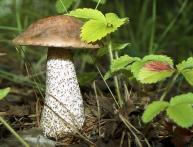
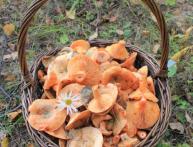
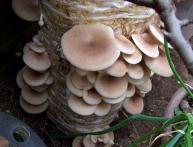
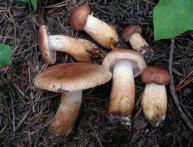
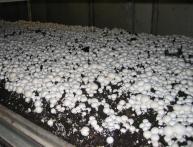
Comments
At one time, they grew oyster mushrooms in bags in the basement, where it was quite humid. We weren’t involved in business, but it was enough for personal use. But this needs to be done constantly, we harvested several crops and abandoned it; if you grow it only for personal use, it does not pay for itself.
I still don’t consider mushroom cultivation an activity that can be practiced at home, even if you have a place with high humidity, this does not guarantee a successful harvest, humidity, temperature, lighting, all these factors need to be controlled and changed depending on stage of mushroom growth, but this is not realistic to do at home.
If we compare the cultivation of oyster mushrooms and champignons, then the latter mushrooms are much more difficult to grow. It is better to buy oyster mushrooms ready-made, with substrate and mycelium in bags. All that remains is to hang them somewhere in the garage and you can wait for the first harvest.
We love mushrooms very much and buy them a lot. There was an idea to grow oyster mushrooms at home. But in our city we did not find mycelium.And in general, I’m wondering: is it profitable to grow oyster mushrooms for personal consumption or is it easier to buy in a store?